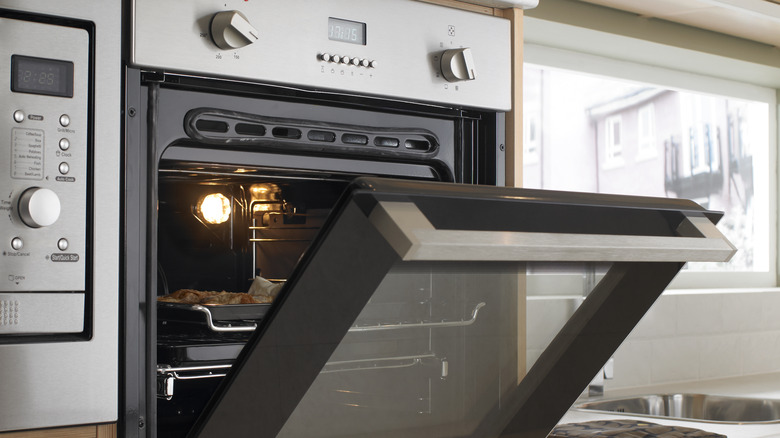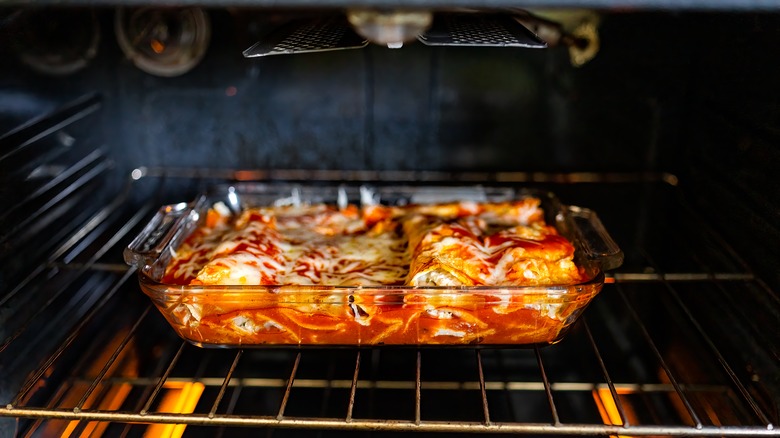Why You Should Keep Your Oven Door Open While Broiling
Broiling is a cooking method that uses intense, direct heat from the oven's top element to sear and brown food quickly. It's particularly effective for creating a crispy finish on top of casseroles (think a nice, crunchy macaroni and cheese crust) or even quickly cooking a perfect steak. This high-heat process, however, can easily lead to overcooked or burnt dishes if not closely monitored. One effective way to prevent this is by leaving the oven door slightly ajar while broiling.
It's been drilled into all of our heads that leaving the oven door closed is imperative while baking, but since broiling is done at such a high heat setting (usually around 550 degrees Fahrenheit), you can get away with leaving the door open. Propping the door open during broiling lets excess heat and steam escape, which is vital for achieving a crisp, grill-like finish on your food. Without this airflow, steam can build up, preventing proper browning. For instance, broiling vegetables is a quick, easy way to char them (just avoid these 15 veggie-roasting mistakes), but with the oven door closed, their high water content can mean they easily become soggy.
An open oven door gives you more control so that you can adjust your oven's temperature as needed. You can also get a better visual on the food itself to ensure it doesn't start to burn.
Get to know your broiler's settings for optimal cooking
Working with super high heat can be intimidating, but, in addition to leaving the oven door slightly open, there are other strategies you can use to maximize your broiling success. For example, always preheat your broiler to ensure even cooking. Proper positioning is also crucial; placing the food at the right distance from the broiler element can make all the difference. Placed too close, you can risk burning, and items that are too far away from the broiler may not char as they should. You'll probably want to use a rack placed between the middle and top of the oven.
Ovens and their broilers can be finicky, and no two are built exactly the same. Using your broiler might take some practice and learning through trial and error as you learn just how hot it gets, how long it takes to preheat, and where certain hot-and-cold spots may be. Plus, the type of oven you use — gas or electric — can make a significant difference. Gas ovens typically provide a more intense, immediate heat, which can be ideal for achieving a quick, high-temperature sear on steaks. This intensity also means food can burn faster if not closely monitored. Electric ovens, on the other hand, tend to offer more even heat distribution. No matter the oven you've got, the most important mistake to avoid with your broiler is leaving things untended. Keep the door open, and keep a close eye on your food!

